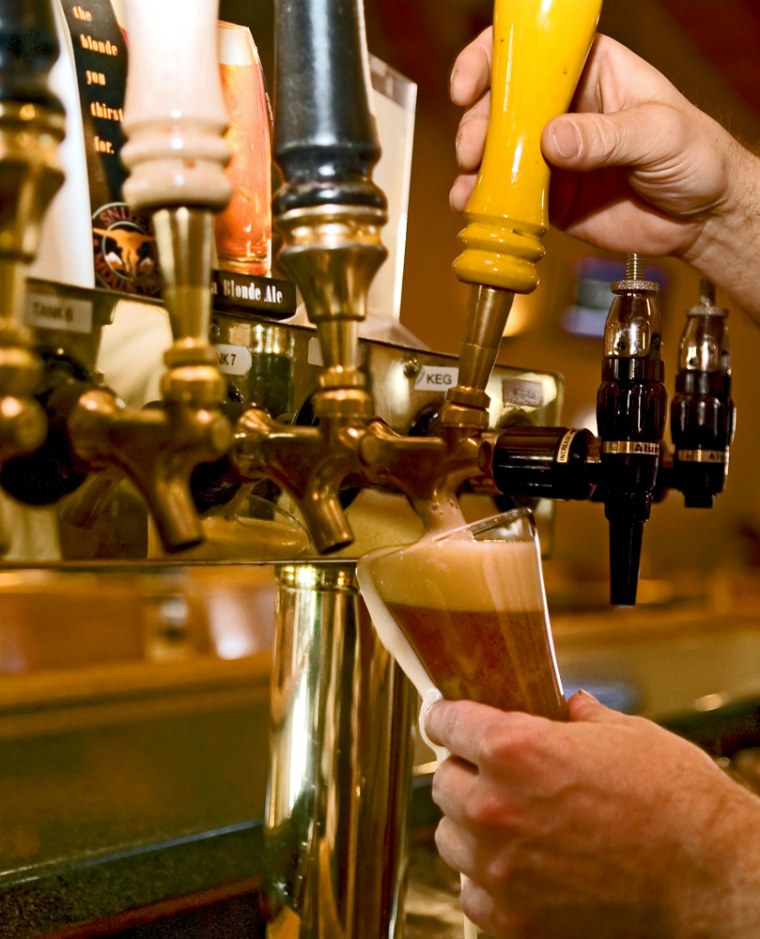Fans of Snipes Mountain Brewery’s cloudy Hefeweizen relish the subtle wheat flavor of the bright, summery brew, and like beer drinkers everywhere, they know when their favorite brew tastes a little too hoppy or bitter.
Connoisseurs could be in for a surprise this year, and they may not be alone.
Small brewers from Australia to Oregon face the daunting prospect of tweaking their recipes or experimenting less with new brews thanks to a worldwide shortage of one key beer ingredient and rising prices for others.
Oh, and one other thing: Beer prices are likely to climb. How high is anybody’s guess. Craft brewers don’t have the means to hedge against rising prices, like their industrial rivals.
“I’m guessing, at a minimum, at least a 10 percent jump in beer prices for the average consumer before the end of the year,” said Terry Butler, brewmaster at central Washington’s Snipes Mountain.
Sales have been relatively flat in recent years among the country’s big three brewers — Anheuser-Busch Cos., Molson Coors Brewing Co. and SABMiller PLC. unit Miller Brewing Co — while small, independent brewers have experienced tremendous growth. The craft brewing industry experienced a 12 percent increase by volume in 2006, with 6.7 million barrels of beer. Sales among microbreweries, which produce less than 15,000 barrels per year, grew 16 percent in 2006.
Now the bright spot in the brewing industry is facing mounting costs on nearly every front. Fuel, aluminum and glass prices have been going up quickly over a period of several years. Barley and wheat prices have skyrocketed as more farmers plant corn to meet increasing demand for ethanol, while others plant feed crops to replace acres lost to corn.
A decade-long oversupply of hops that had forced farmers to abandon the crop is finally gone and harvests were down this year. In the United States, where one-fourth of the world’s hops are grown, acreage fell 30 percent between 1995 and 2006.
Australia endured its worst drought on record. Hail storms across Europe damaged crops. Extreme heat in the western United States hurt both yields and quality.
Big brewers can hedge against rising prices for raw ingredients and can negotiate better, longer-term contracts for ingredients, while smaller brewers generally are left with whatever is left.
Snipes Mountain saw its barley malt prices grow between 10-15 percent this year, and paid $12.35 per pound for Cascade hops, far beyond the $5.60 per pound allotted last year.
Those rising prices and, in some cases, shortages, may force Butler to rethink his lineup of 13 beers in the months ahead. He’ll also be tinkering with a Hefeweizen recipe that relies on Saaz hops, a mild variety popular with Bohemian pilsners, after severe weather in Europe dinged as much as 40 percent of the crop.
“Palate-wise, it may change the flavor a little bit, but only a little bit,” he said.
Brewers at Tommyknocker Brewery in Idaho Springs, Colo., already have been doing some tinkering of their own. Last year, a slim supply of bittering Hallertau hops forced them to substitute the Mount Hood variety, slightly altering their three lagers: Alpine Glacier Lager, Butt Head Bock and Ornery Amber Lager.
The brewery contracted for hops a year in advance, allowing it to switch back again this year, lead brewer Eric Rode said. But recipe tweaking is becoming more common, and it’s likely to continue, he said.
Those contracts also enabled Tommyknocker to hold the line on prices, with only a 50-cent increase per case wholesale, largely due to rising glass prices. The numbers could be much bigger when spiking costs of raw ingredients are factored in next year, he said.
So far, price increases have been pretty modest — less than a dollar a 12-pack at retail, said Harry Schuhmacher, editor of the online trade publication Beer Business Daily.
“Brewers are trying to take pricing up, but it’s hard when beer is pretty sensitive to pricing per volume. And when drinkers are leaving beer to go to wine and spirits,” he said.
On the other hand, smaller brewers have more pricing power than the big guys do.
“They’re able to increase pricing more without losing drinkers,” he said.
Big Sky Brewing Co. in Missoula, Mont., which distributes in 16 states, has increased the price of its Big Sky IPA by $1 a six-pack because barley prices doubled. The beer makes up only about 6 percent of the company’s line, led by the popular brown ale, Moose Drool.
Going forward, Big Sky will see what the big breweries do before making changes to pricing, brewmaster Matt Long said.
“Many of the craft brewers don’t do that. They continue to have six packs on sale half the time, and I don’t know how they can continue to operate that way,” he said. “The trend is going to be toward $10 six packs.”
But Long also said he doesn’t think that trend will last long.
“Maybe the pendulum will swing back,” he said. “It might not happen for the 2008 crop, but maybe at some point, it’ll come back halfway, which would be nice.”
It may be too soon to say if, or how high, prices might go up, said Paul Gatza, director of the Boulder, Colo.-based Brewers Association. The bigger hit for craft brewers might be to the fun side — testing ingredients and new or seasonal brews.
“I would think brewers will try to keep their existing beers in the marketplace if they can,” he said. “But this may put a damper on some of that innovation and experimentation for some of those hoppier beers, which is a shame.”
